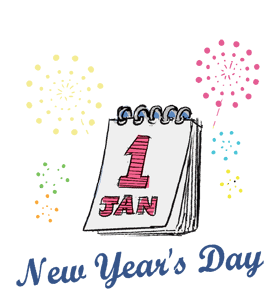New Year's Day
New Year's Day Quick Facts in France
| AKA Name | Jour de l'An |
|---|---|
| HashtagsCompiled on | #NewYear2026 |
| Related Hashtags | #NewYearsEve, #Christmas |
| 2026 Date | 1 January 2026 |
| 2027 Date | 1 January 2027 |
2026 Holidays & Dates - FRA
| France & Common Holidays | ||
| Misc. & Int'l. Observances | ||
| Christian Holidays | ||
| Jewish Holidays | ||
| Muslim Holidays |
› | ||
